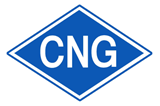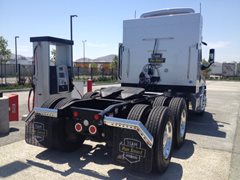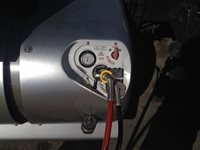 When most people think of CNG fueling, they think of a lack of actual stations available to get fuel at, which is true in many areas to a certain extent. As the network of fueling stations increases, more and more people are gaining access to this fuel supply. Here in Southern California, we happen to have one of the largest and most accessible networks, thanks to the CNG automobile boom over the past decade.
When most people think of CNG fueling, they think of a lack of actual stations available to get fuel at, which is true in many areas to a certain extent. As the network of fueling stations increases, more and more people are gaining access to this fuel supply. Here in Southern California, we happen to have one of the largest and most accessible networks, thanks to the CNG automobile boom over the past decade.
 Automobiles, busses, and refuse trucks have been working with CNG as a fuel source long before Class 8 trucks were doing so. A lot of these early-adopting entities installed their own private fueling stations, while a vast majority of the private sector users relied heavily on private/public partnerships for their fueling stations. These types of stations did the job well of providing a much needed network of fueling for CNG vehicles here in California, but ultimately were designed to pump out much smaller quantities of fuel than what is used by the big trucks fueling in today’s CNG market. Where an automobile may take from 5 to 15 gallons per fill, a lot of trucks like mine can average well over 100 to 150 gallons per fill!
Automobiles, busses, and refuse trucks have been working with CNG as a fuel source long before Class 8 trucks were doing so. A lot of these early-adopting entities installed their own private fueling stations, while a vast majority of the private sector users relied heavily on private/public partnerships for their fueling stations. These types of stations did the job well of providing a much needed network of fueling for CNG vehicles here in California, but ultimately were designed to pump out much smaller quantities of fuel than what is used by the big trucks fueling in today’s CNG market. Where an automobile may take from 5 to 15 gallons per fill, a lot of trucks like mine can average well over 100 to 150 gallons per fill!
 As a result of their original design, a lot of these smaller stations are not adequate for the large volume needed for rigs. A lot of the compressors are now being overworked, causing them to be very slow and even break down. I caution anyone in a CNG truck to exercise caution when using some of these older/smaller stations, as a serious problem has been uncovered in using them. A common problem that is becoming more prevalent and feared in the CNG community is the leaking of oil from these problem compressors, which then enters into your truck’s CNG fuel system. Even though there are filters on the engine that are drained daily for just this problem, issues are still arising from failure to do so and continued usage of these problem pumps.
As a result of their original design, a lot of these smaller stations are not adequate for the large volume needed for rigs. A lot of the compressors are now being overworked, causing them to be very slow and even break down. I caution anyone in a CNG truck to exercise caution when using some of these older/smaller stations, as a serious problem has been uncovered in using them. A common problem that is becoming more prevalent and feared in the CNG community is the leaking of oil from these problem compressors, which then enters into your truck’s CNG fuel system. Even though there are filters on the engine that are drained daily for just this problem, issues are still arising from failure to do so and continued usage of these problem pumps.
This presence of oil in your CNG fuel can lead to a very, very costly fix on your engine! Although the fueling companies have stepped up and realized the need for higher horsepower compressors (400-600+ HP) and larger storage tanks, the need still outweighs the actual amount of stations out there that can fuel multiple large trucks at one time. I am however noticing a continued rapid growth throughout the West in regards to updates on the infrastructure, but still rely heavily on my “techno-geek” side to find the best places to fuel. Using apps such as the Clean Energy Station Locator has saved me a world of trouble in this area and has saved me from a lot of the hassle of weeding out the “not so truck friendly” stations. It not only gives accurate locations of both CNG and LNG stations, but it also specifies which types of vehicles (highlighted in green) can be filled by the equipment at each individual station. One way to stay ahead of the game in the ever-advancing world of CNG-fueled trucks is to always be using all of the tools possibly available, whether they are from technology or from hard lessons learned!